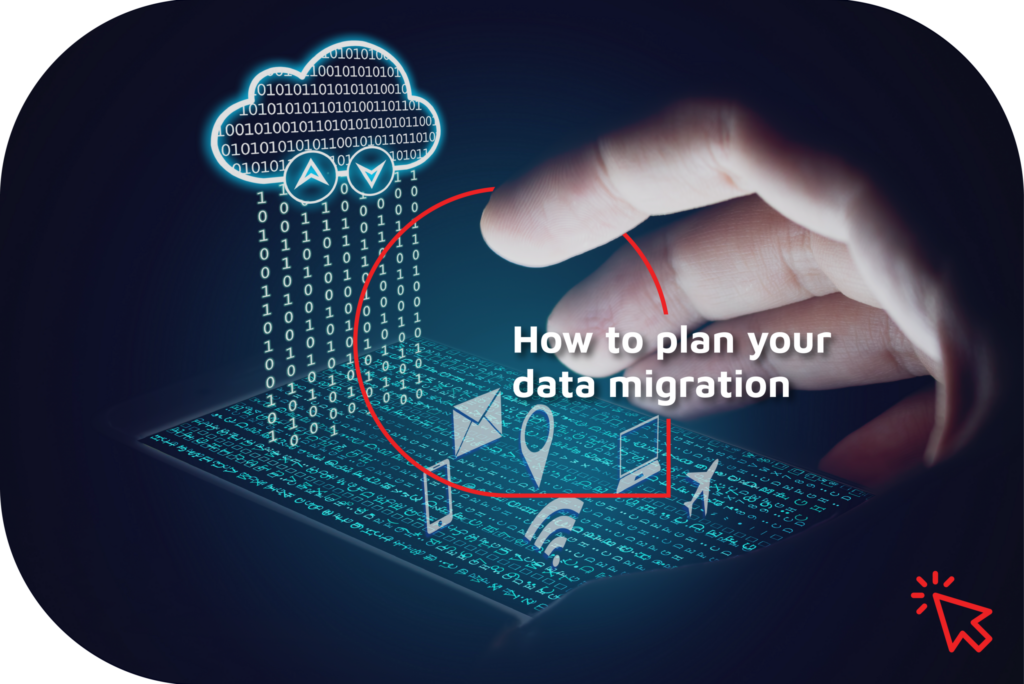Migrating your data to the cloud – what you need to know
11 November 2022 | Noor Khan

Making the decision to move your data to the cloud is an important one, and it needs to be carefully considered before you start. The three essential stages of cloud migration cover: analysis of both your business needs and technical operation, risk analysis and a plan for the scope of the migration process and the managed service operation.
It is essential that before you start moving your data, you have identified what platform/s operate in line with your needs, have the tools that you require, and can be operated by your staff or team – or the training is available to give them the information they need to handle the program.
Understanding your data and creating a data migration plan
In order to make your data migration more streamlined and efficient, you need to know what data you are working with. If you do not fully understand your data, or have inefficient processes, this can cause extra work, duplication of data, or the transfer of obsolete information into your new cloud environment.
When creating your migration plan, consider how you will transfer the data across, and when you will remove it from your existing systems (it can be better to do this after the transfer is complete, in case there are any issues with the data during transfer).
Read the article on how to plan your data migration.

If you are not fully versed in cloud migration, or do not have the skillsets to perform this in house, using a cloud-migration service provider can make the process easier and with less risk to the integrity of the databases, data, and cloud setup.
Find out what to look out for when looking for a data engineering partner
Determining your level of cloud integration
How much of your data will you be transferring to the cloud, and what level of integration are you planning on using? Shallow integration (also known as “lift and shift”) involve moving the data from on-premises architecture to the cloud platform as they are, which can be more manageable – this may also seem cheaper than deep integration, however maintaining these materials can raise costs considerably.
Deep integration takes the data from the original OS and makes them as close as possible to cloud-native resources, which can save on maintenance costs and benefit the cloud infrastructure in the long term.
Handling data integrity and operational issues
It is important to know how much of your data will be usable in existing formats, what should and must be converted, and how your chosen tools work with each other – if you do not evaluate this before starting, you can find significant problems or delays during the process if you later discover incompatible programs or datasets.
Migrating data online or offline
Whether you decide to migrate online or offline it will largely depend on your business needs, how much data you are processing, and whether you are using a public or private network. It is important that you consider your budget and costs at this stage, as bandwidth can be an extra expense.
The process for transferring to a cloud service can be complicated and it does require careful thought at each stage, but if you manage it carefully, and consider what your business needs are, the process can help to evolve and grow your business into an increasingly digital world.
Migrating data from one cloud to another
Many organisations migrate their data one from cloud to another. If your data cloud provider is not meeting your expectation or has limitations when it comes to effectively handling and storing your data, you can migrate your data to another platform. This can be a costly process, therefore you will need to ensure you are choosing the better alternative that will provide an ROI.
Read about migrating data from Microsoft to AWS and migrating your data from Oracle to Redshift.
Migrating your data to the cloud with Ardent
Ardent work with you to understand your needs and requirements and present a solution fit for you to maximise on the potential of your data. Whether you are looking to migrate from one cloud to another or from on-premise data stores to the cloud, we can help. Our data engineers have worked with hundreds of clients to deliver their data migration solutions successfully. Get in touch to find out more or to set up a quick call to get started.
Find out about data migration strategies and choosing the right one for you.
Ardent Insights

Are you ready to take the lead in driving digital transformation?
Digital transformation is the process of modernizing and digitating business processes with technology that can offer a plethora of benefits including reducing long-term costs, improving productivity and streamlining processes. Despite the benefits, research by McKinsey & Company has found that around 70% of digital transformation projects fail, largely down to employee resistance. If you are [...]
Read More... from Migrating your data to the cloud – what you need to know

Stateful VS Stateless – What’s right for your application?
Protocols and guidelines are at the heart of data engineering and application development, and the data which is sent using network protocols is broadly divided into stateful vs stateless structures – these rules govern how the data has been formatted, how it sent, and how it is received by other devices (such as endpoints, routers, [...]
Read More... from Migrating your data to the cloud – what you need to know

Getting data observability done right – Is Monte Carlo the tool for you?
Data observability is all about the ability to understand, diagnose, and manage the health of your data across multiple tools and throughout the entire lifecycle of the data. Ensuring that you have the right operational monitoring and support to provide 24/7 peace of mind is critical to building and growing your company. [...]
Read More... from Migrating your data to the cloud – what you need to know






